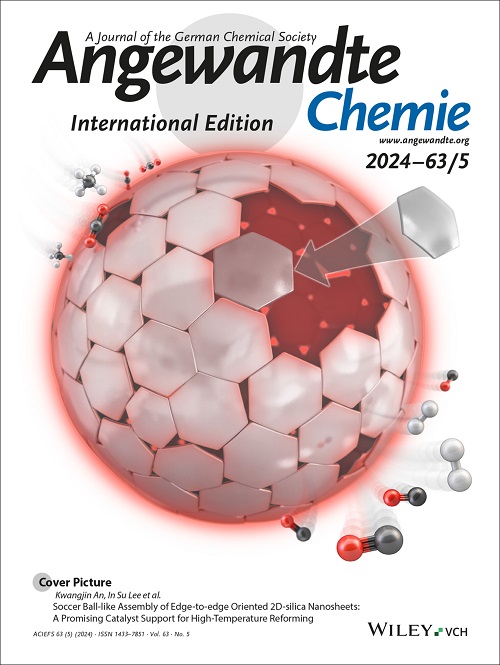Chemoenzymatic Synthesis and Protein Engineering Enable Efficient, Scalable Production of Teleocidin Derivatives
IF 16.1
1区 化学
Q1 CHEMISTRY, MULTIDISCIPLINARY
引用次数: 0
Abstract
Monoterpenoid indole alkaloids (MIAs), a class of bioactive natural products, are highly valued in drug development for their unique pharmacological activities. Teleocidins, known for activating protein kinase C (PKC), are particularly promising but challenging to synthesize due to their structural complexity. Traditional methods often rely on heavy metals and yield low amounts, while biosynthetic approaches face efficiency issues. Our study developed an efficient chemoenzymatic route to produce 13 teleocidin B compounds and derivatives at scale. To overcome enzymatic reaction bottlenecks, we engineered the critical enzyme TleB by fusing a reductase module to create a self‐sufficient P450 system, boosting indolactam V production to 868.8 mg L化学酶合成和蛋白质工程使远杀虫素衍生物的高效、规模化生产成为可能
单萜类吲哚生物碱(MIAs)是一类具有生物活性的天然产物,因其独特的药理活性在药物开发中受到高度重视。远杀丝蛋白以激活蛋白激酶C (PKC)而闻名,由于其结构的复杂性,其合成特别有前途,但具有挑战性。传统方法往往依赖重金属,产量低,而生物合成方法面临效率问题。本研究开发了一种高效的化学酶途径,可大规模生产13种远杀虫素B化合物及其衍生物。为了克服酶促反应的瓶颈,我们通过融合还原酶模块设计了关键酶TleB,创建了一个自给自足的P450系统,将吲哚内酰胺V的产量提高到868.8 mg L−1。此外,我们建立了一个双细胞工厂,共表达工程hMAT2A - TleD和TleB/TleC酶,首次实现了远杀虫素B异构体的全酶合成,总产量为714.7 mg L−1。化学修饰进一步扩展了5个新的吲哚内酰胺V和2个远杀虫素A1衍生物的文库。发酵证实了重组大肠杆菌体系的可扩展性,产生430 mg吲哚内酰胺V、170 mg远杀菌素A1和300 mg远杀菌素B异构体。这项工作不仅建立了一个可持续的遥杀虫素合成平台,而且解决了复杂天然产物合成的效率和可扩展性挑战,为生物活性化合物的实际应用铺平了道路。
本文章由计算机程序翻译,如有差异,请以英文原文为准。
求助全文
约1分钟内获得全文
求助全文
来源期刊
CiteScore
26.60
自引率
6.60%
发文量
3549
审稿时长
1.5 months
期刊介绍:
Angewandte Chemie, a journal of the German Chemical Society (GDCh), maintains a leading position among scholarly journals in general chemistry with an impressive Impact Factor of 16.6 (2022 Journal Citation Reports, Clarivate, 2023). Published weekly in a reader-friendly format, it features new articles almost every day. Established in 1887, Angewandte Chemie is a prominent chemistry journal, offering a dynamic blend of Review-type articles, Highlights, Communications, and Research Articles on a weekly basis, making it unique in the field.

 求助内容:
求助内容: 应助结果提醒方式:
应助结果提醒方式:


